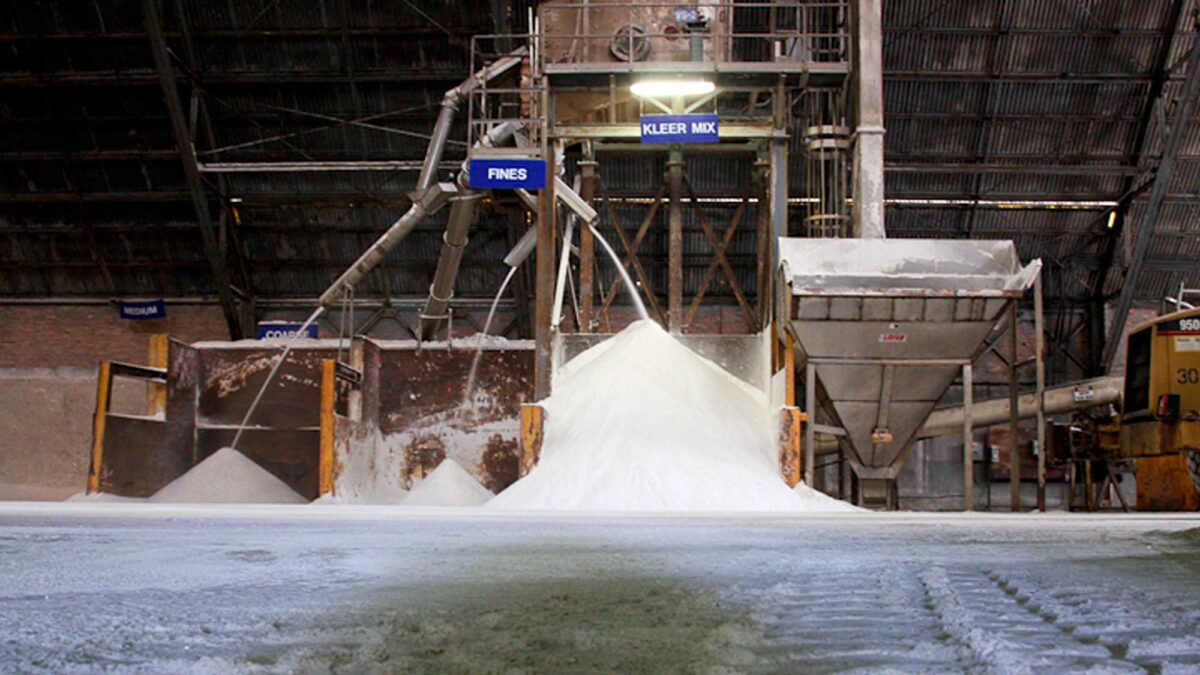Snapshot: Overview of the mineral resources of the Central Lowland region of the midwestern United States, including Iowa and portions of Minnesota, Wisconsin Illinois, Michigan, Indiana, and Ohio.
Topics covered on this page: Overview; Resources.
Credits: Most of the text of this page is derived from "Mineral resources of the Midwestern US" by Alex F. Wall, chapter 5 in The Teacher-Friendly Guide to the Earth Science of the Midwestern US, edited by Mark D. Lucas, Robert M. Ross, and Andrielle N. Swaby (published in 2014 by the Paleontological Research Institution). The book was adapted for the web by Elizabeth J. Hermsen and Jonathan R. Hendricks in 2022–2023. Changes include formatting and revisions to the text and images. Credits for individual images are given in figure captions.
Updates: Page last updated July 12, 2023.
Image above: Salt is sorted into different sizes at a mining facility near Chicago, Illinois. Photograph by WBEZ (Flickr; Creative Commons Attribution-NonCommercial 2.0 Generic license; image cropped and resized).
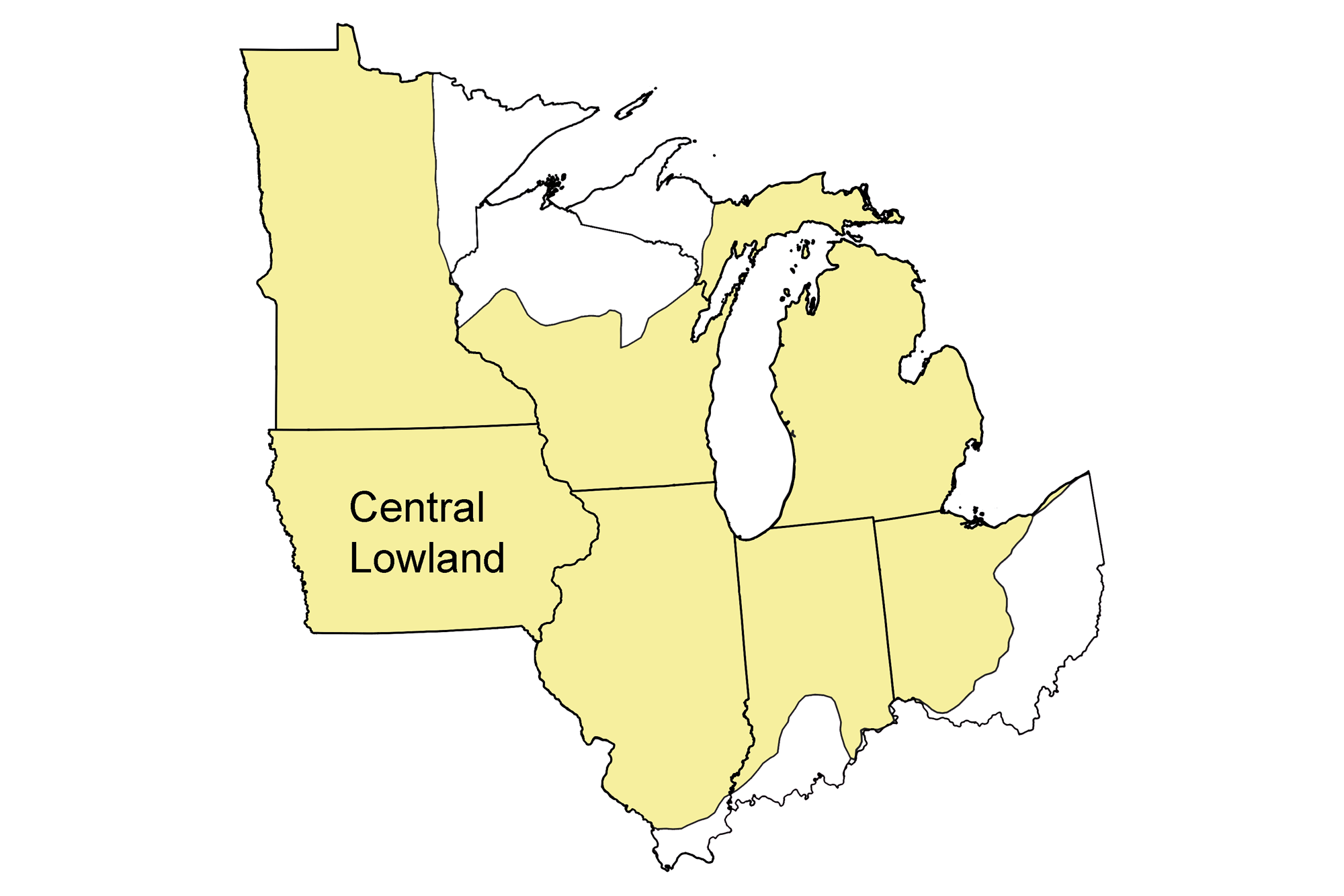
Overview
The Central Lowland is not widely exploited for mineral resources because its near-surface minerals are not commercially valuable. Nearly all of the bedrock in this large region formed as sediment under shallow seas. Limestone and shale, the most common rocks, do not tend to be rich in commercially significant minerals, though the rocks themselves are often quarried for building materials. The ancient seas, like the modern ocean, contained dissolved salts that were eventually preserved in rocks around the Central Lowland. These evaporite minerals, formed by precipitation out of solution in water, are mined commercially in Michigan’s Lower Peninsula, and, to a lesser extent, in Iowa. Wells in Manistee County tap into deposits of brine rich in magnesium oxide, allowing Michigan to produce more magnesium compounds than any other state. Magnesium is relatively abundant in seawater, and the brines deposited under Michigan are the remains of an ancient sea that once covered Michigan and much of the Central Lowland. Marine deposits in Manistee County and Osceola County are also mined for halite (salt) and potash (in Osceola County alone), making the state a leading producer of those minerals as well.
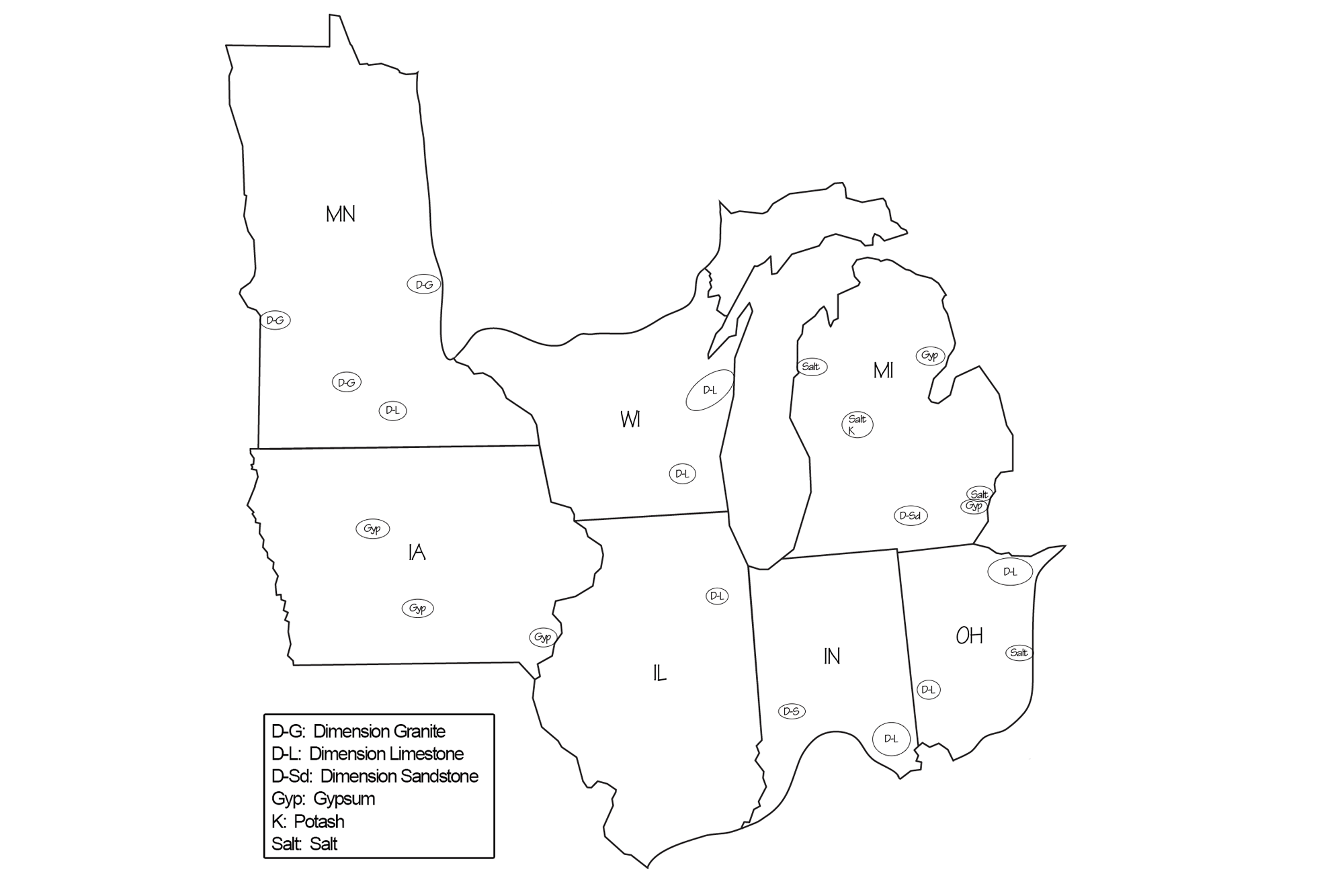
Principal mineral-producing localities in the Central Lowland, associated primarily with Paleozoic deposition of sand, carbonate sediments, and occasionally evaporates in warm shallow continental seas of the Paleozoic. Adapted from 2009 USGS State Mineral Info.
Halite (NaCl) is mined in two ways. When deposited in thick beds, salt can be excavated by mechanically carving and blasting it out. This method, called “room and pillar” mining, usually requires that pillars of salt be left at regular intervals to prevent the mine from collapsing.
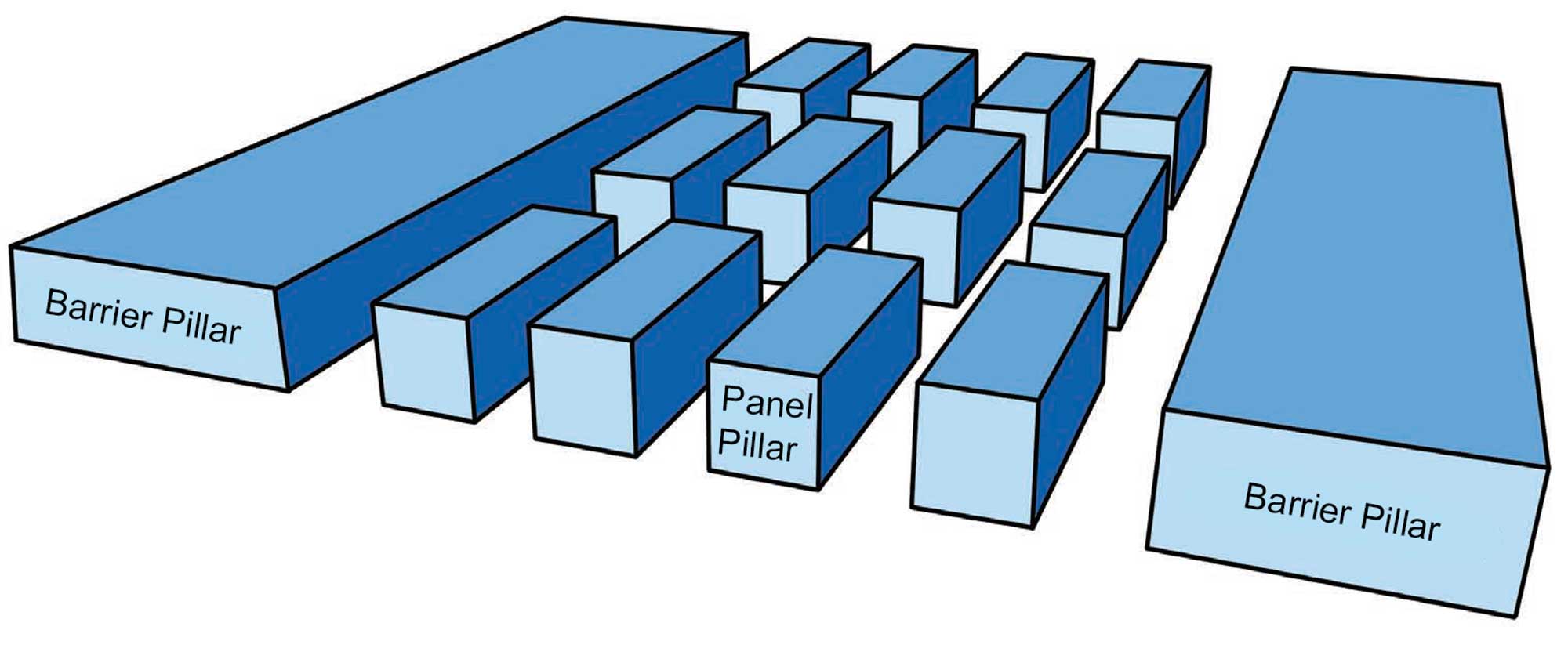
In pillar and room mining, the mine is divided up into smaller areas called "panels." Groups of panels are separated from one another by extra-large (barrier) pillars that are designed to prevent total mine collapse in the event of the failure of one or more regular-sized (panel) pillars. Image by Wade Greenberg-Brand, adapted from image by "Swinsto101" (Wikimedia Commons; Creative Commons Attribution-ShareAlike 3.0 Unported license) and modified for the Earth@Home project.
Another method, called solution mining, involves drilling a well into a layer of salt. In some cases, the salt exists as part of a brine that can then be pumped to the surface and the water removed, leaving salt. In others, fresh water is pumped down to dissolve the salt, and the solution is brought back to the surface where the salt is removed.
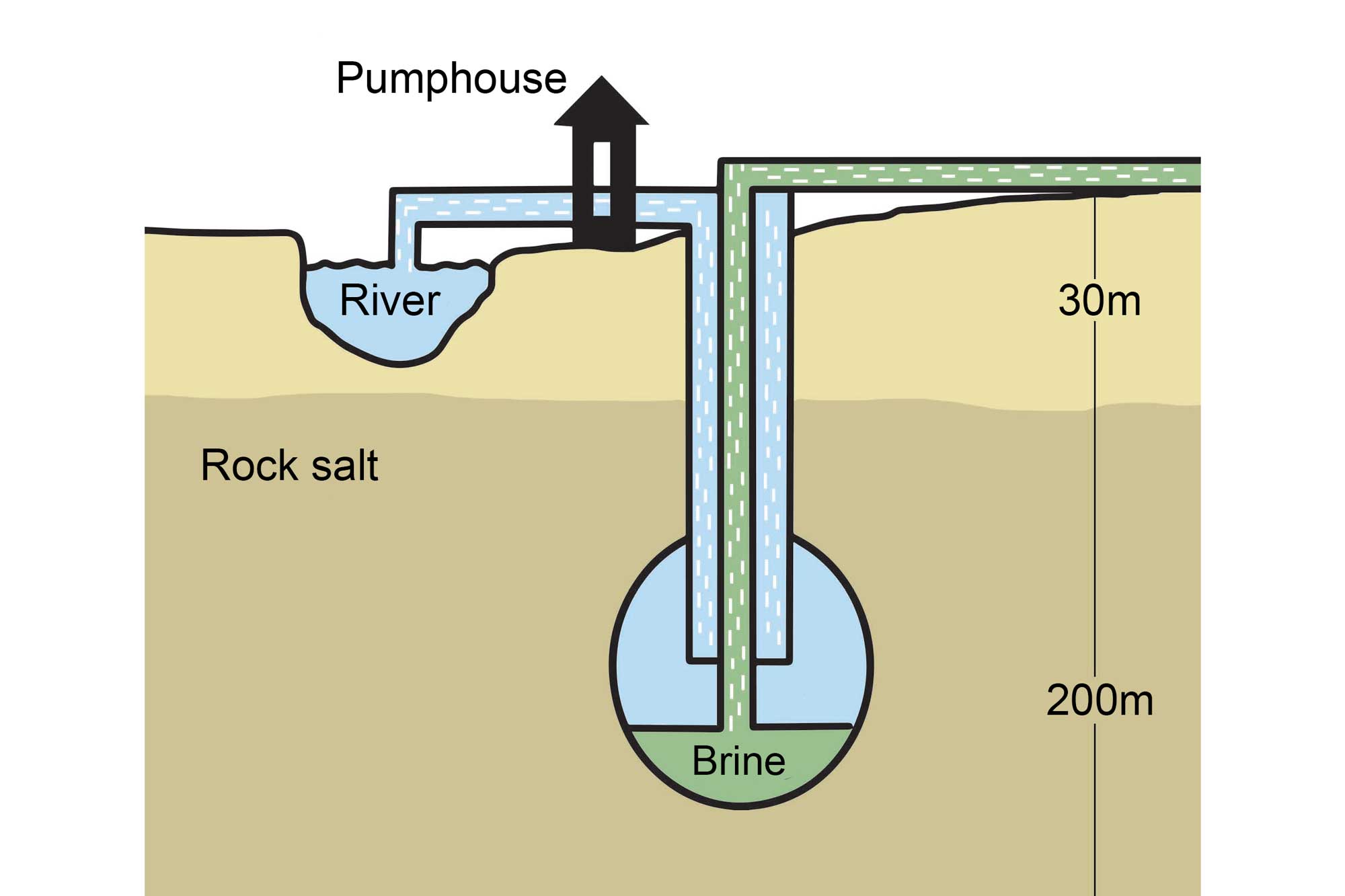
An example of solution mining that involves the pumping of fresh water through a borehole drilled into a subterranean salt deposit. Image by Wade Greenberg-Brand, adapted from image by the Salt Association and modified for the Earth@Home project.
Potash is a name used for a variety of salts containing potassium, with mined potash being primarily potassium chloride (KCl). The majority of potash is used as fertilizer, but an increasing amount is being used in a variety of other ways: water softening, snow melting, a variety of industrial processes, as a medicine, and to produce potassium carbonate (K₂CO₃).
Gypsum, (CaSO₄-H₂O) another evaporite mineral, is mined in Michigan and is currently the only mineral resource exploited in all parts of the Central Lowland, especially Iowa. Iosco and Kent Counties in Michigan both lie on the Michigan Formation, the source of their gypsum. Iowa is typically the second or third largest producer of gypsum in the country. Deposits are found along the Des Moines River Valley running from north central to the southeastern corner of the state. The Fort Dodge Beds are mined in Webster County, the Saint Louis Formation in Marion County, and the Wapsipinicon Formation in Des Moines County. Gypsum is used in plaster and wallboard. It is the mineral assigned the value of 2 on the Mohs scale of mineral hardness, meaning that it is softer than a fingernail.
The Michigan Formation
The bedrock of Michigan’s Lower Peninsula forms a basin where older rocks can be imagined curving up from below to cup the younger strata in the center. This produces some formations that appear as rings on geologic maps. For example, the Michigan Formation, where most of the state’s gypsum is mined, can be found in a nearly continuous band around, but at least 64 kilometers (40 miles) from, the center of the Lower Peninsula.
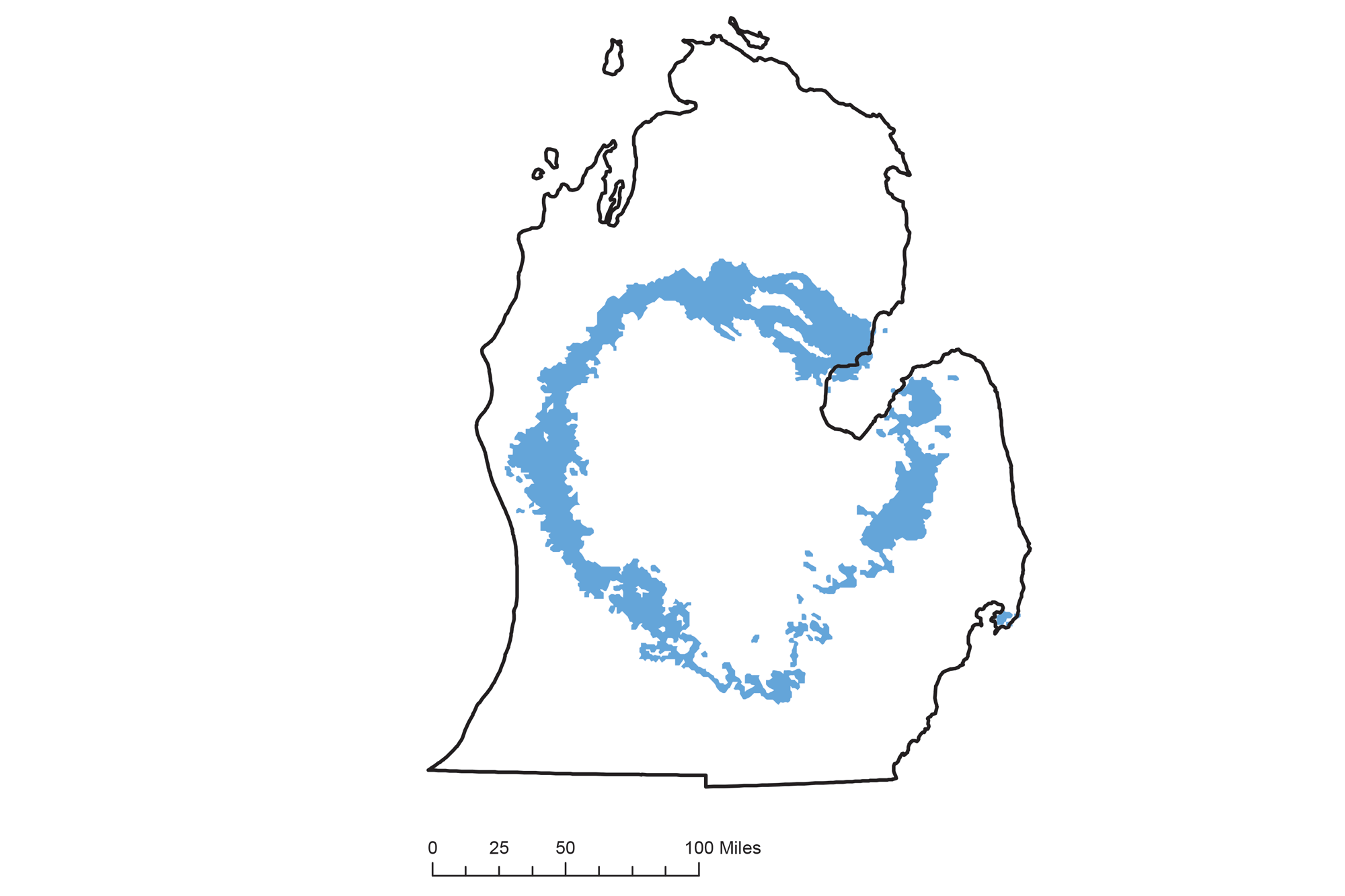
Map of Michigan showing the ring-shaped distribution of the Michigan Formation, which is composed of gypsum.
Resources
Resources from the Paleontological Research Institution
Digital Atlas of Ancient Life: Minerals (collection of 3D models on Sketchfab): https://skfb.ly/6WxTo
Digital Encyclopedia of Earth Science: Minerals: https://earthathome.org/de/minerals/



